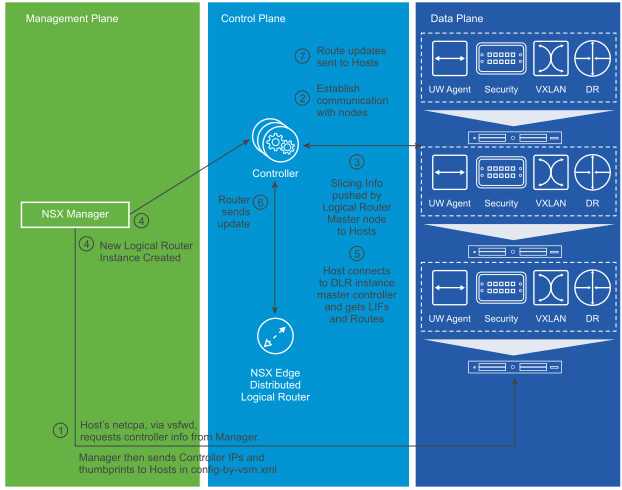NSX has two types of routing subsystems, optimised for two key needs.
The NSX routing subsystems are:
- Routing within the logical space, also known as “East – West” routing, provided by the Distributed Logical Router (DLR);
- Routing between the physical and logical space, also known as “North – South” routing, provided by the Edge Services Gateways (ESG).
Both provide options for horizontal scaling.
You can scale-out distributed E-W routing via the DLR.
The DLR supports running a single dynamic routing protocol at a time (OSPF or BGP), while the ESG supports running both routing protocols at the same time. The reason for this is the DLR is designed to be a “stub” router, with a single path out, which means more advanced routing configurations are typically not required.
Both the DLR and the ESG support having a combination of static and dynamic routes.
Both the DLR and the ESG support ECMP routes.
Both provide L3 domain separation, meaning that each instance of a Distributed Logical Router or an Edge Services Gateway has its own L3 configuration, similar to an L3VPN VRF.
